Black Nightshade
A poisonous member of the Solonacea family that includes potatoes and tomatoes, but also deadly nightshade. Can be a prolific weed in the garden with a bushy habit growing to around 100cm. White flowers and black berries. There are at least two varieties, a species complex and cultivated versions, some of which are edible (sometimes after special preparation) – but not the wild UK variety. Ingestion causes effects delayed by 6 – 12 hours including vomiting, diarrhea, sweating, confusion, and abdominal pains.
| Hedgerow Type | |
| Common Names | Black Nightshade, Black nightshade, Blackberry nightshade |
| Scientific Name | Solanum nigrum |
| Season Start | Jul |
| Season End | Sep |
Flowers
On separate stems opposite to leaves, White in clusters, with 5 petals and a yellow centre. 10-15mm. Very similar to tomato.
Fruit
Clusters of tomato like berries, starting green ripening to black, 5-10mm. Structure like a tomato, many seeds in a soft pulp.
Possible Confusion
Woody Nightshade, pictured, is similar but has purple flowers.
Frequency
Fairly common.
Other Facts
Edible varieties are cultivated around the world, but it is never a high quality crop, eaten by the poor, the berries sometimes made into jam.

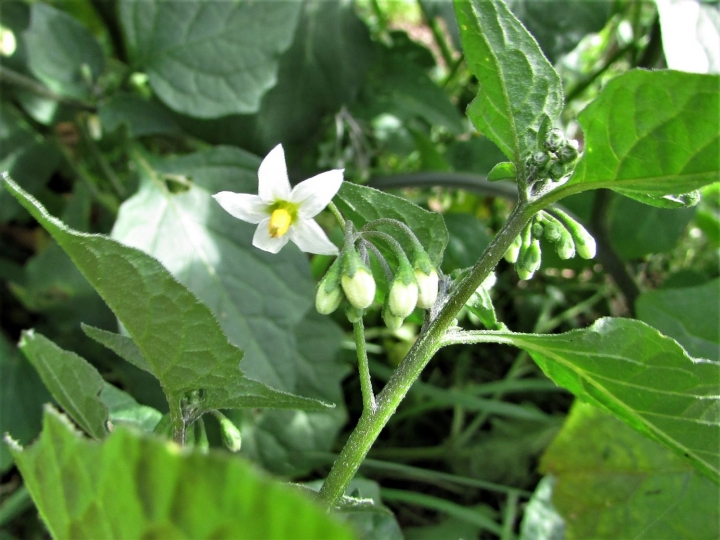
















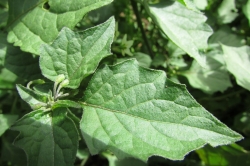
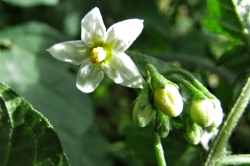
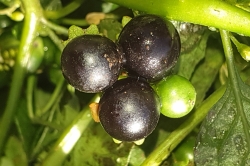
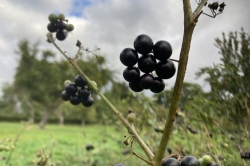
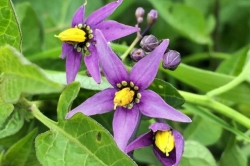





3 comments for Black Nightshade
in Cameroon, West Africa we eat the leaves, thouroughly cooked as they can be bitter. they are an accompaniment to meat and fufu dishes.
I’m curious – I’m aware that the plant has a controversial reputation. What evidence have you considered before pronouncing it here as poisonous in the UK? Have you any personal experience of the effects of eating the berries or do you know of anybody who has?
It is true that the plant is stated to be poisonous in many field guides however there are many wild food authors claiming that the ripe berries are edible and it has been suggested that
reported poisonings are a result of confusion with deadly nightshade. While I feel this an entirely credible theory, these authors are mostly based in North America so it’s at least plausible that we do have a poisonous subspecies growing in the UK, but is there any evidence to support this?
I have the plant growing and fruiting prolifically in my garden – it’s just become home to a colony of blackfly and as a gardener I know how this game goes – I have two choices: remove it entirely, or destroy the blackfly. I have no desire to be poisoned, but naturally I want to know the truth before condemning it as a poisonous weed and destroying all those potentially delicious berries!?
Any further information pertaining to the UK, sources etc would be greatly appreciated.
This plant is very common in West Africa Nigeria and the Yoruba tribes in Southwest Nigeria call it Efo Odu and it could be well delicious when properly cooked as vegetable soup with lots of ingredients and dry fishes. It can be eaten with pounded yam and corn meals .